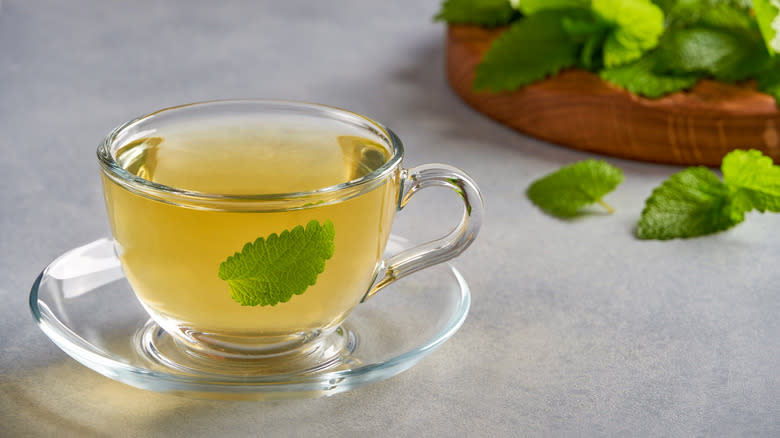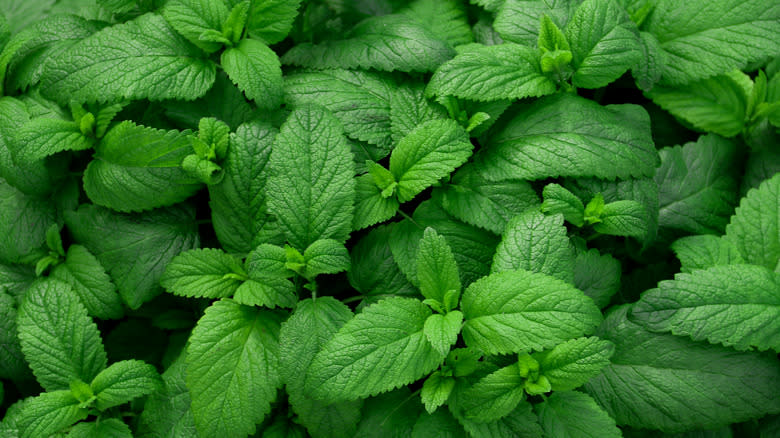Lemon Balm Makes A Great Substitute For Hard-To-Find Bergamot

If you have ever had Earl Grey tea or a citrusy dessert that doesn't taste quite like you expected, you have probably tried bergamot before. Bergamot orange is a citrus fruit from Asia but is most popularly cultivated in Italy. It is known for its fragrant, floral smell and acidic yet herbal taste that is used in everything from cups of tea to decadent desserts. If you want to try this ingredient at home, you might run into trouble. Finding bergamot for culinary use can be a challenge. If you want to experience a flavor similar to bergamot without the stress of tracking down the citrus, we recommend trying lemon balm.
Lemon balm is a green, leafy herb native to Europe and central Asia. While it is not an actual fruit — technically a variety of mint — it was given its name due to its famously lemony scent. This combination of citrus flavor and aroma, along with green, minty undertones, while not perfectly mimicking the traits of bergamot, can provide a very similar eating or drinking experience.
Read more: 15 Boba Flavors, Ranked Worst To Best
Where To Find Lemon Balm And How To Use It

Lemon balm is fairly available at larger grocery stores around the country, usually in the form of dried tea leaves or sometimes as an extract. While extract may seem most convenient, keep in mind that it will likely also have a more potent flavor that can easily become overwhelming — we recommend opting for the dried stuff. If you have your heart set on working with fresh lemon balm, you're in luck. The plant can be found at quite affordable prices at most nurseries or even at some hardware stores.
There are many ways to incorporate lemon balm into your recipes. The fresh leaves can be treated like any other fresh herb, used as a garnish, tossed with other greens, or even turned into a unique pesto. Dried leaves can be steeped in hot water for tea, which can be enjoyed as is or turned into items like simple syrup for future use.
Read the original article on Tasting Table.

